Introduction-Clean Air and Smoke Control Areas
Following the announcement from London Mayor, Sadiq Khan, that he will be reviewing the impact of wood-fired appliances in the region it seems timely to look at the alternatives( gas-pizza-ovens) given the high and often illegal levels of airborne particulate pollution.
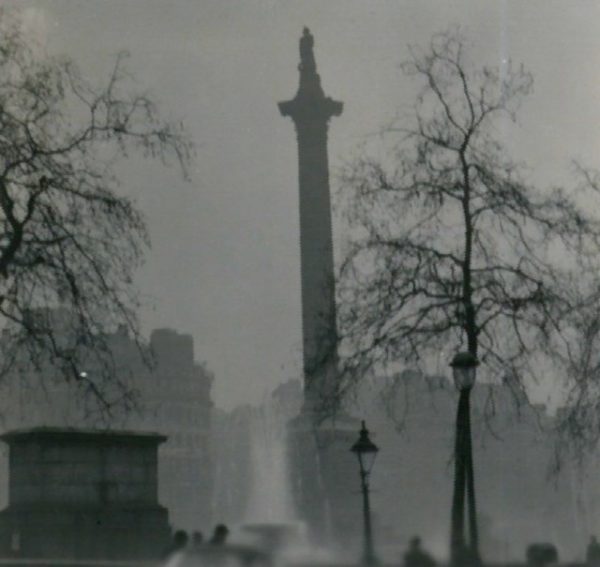
The Clean Air Act was enacted in 1956 as a direct result of life threatening smogs arising from urban industrial output and coal-fired domestic fireplaces . With amendments in 1968 and more recently in 1993 with later revisions in David Cameron’s ‘Red Tape Challenge’, the government has sought to control pollution but at the same time cut bureaucratic interference in day to day business operations.
The initial impetus to control pollution was the burden of dark smoke with high particulate levels that was causing health to decline rapidly in the 50’s. The concept of clean burning appliances was enacted in law so that DEFRA, the government department in charge of policing pollution, could create an ‘exempt appliance’ list, appliances that had met targets for particulate output and enabled business to carry on in a more environmentally friendly way within Smoke Control Areas.
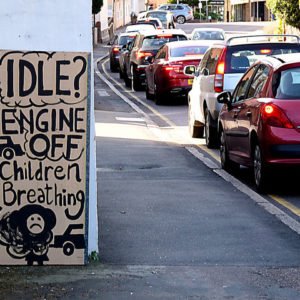
Although industrial pollution and coal burning has fallen dramatically over the last 50 years, transport has grown exponentially and has largely negated the gains in clean air in all our major cities.
With cars, buses, heavy goods lorries and trains all now contributing to the particulate load via diesel engines, wood-burning appliances have now been singled out as a major contributory factor in modern pollution.
Wood-burning stove use has also increased exponentially as wood is carbon neutral unlike fossil fuels and is the the ultimate ‘eco’ fuel when burned in an ‘exempt appliance’- low emissions when the fuel is dried below 20% moisture.
Unfortunately, wood as a resource is completely unregulated in its supply- some log deliveries could be seasoned and be still 30-50% moisture others 20% or less. A few companies have challenged this with fuel that is kiln dried and guaranteed less than 20% before delivery, others have sought to use compressed wood waste in the form of ‘heat logs’ to reduce the moisture content even further.
The issue now is these fuels and appliances are being called into question as part of this new review and it looks like wood burning may be outlawed altogether even though wood smoke is the raison d’etre for many authentic cooking cuisines like pizza and grills.
gas-pizza-ovens or wood-fired pizza ovens
Being a natural resource, wood has been the cooking fuel of choice for millennia- it is cheap, locally available and carbon neutral. Trees lock up carbon in the air and build their tissues with it leaving a dense compact fuel when dried out. Wood burning appliances like pizza ovens and stoves harness this bound up energy to drive heat into their structural mass be it brick, chamotte or cast iron and release it slowly by radiant heat.
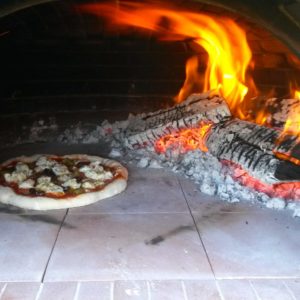
When firing up these appliances, smoke is a natural by-product of combustion until a point is reached in the firing cycle when gases auto combust at around 300C. After this point is reached, any soot in the flame burns away leaving a clean burn.
The problem arises when temperature falls or fuel smoulders without enough air to combust properly. To cook pizza, high temperatures of 300C and above are necessary for the dough to rise quickly, crust to form on the base and any toppings to cook through and slightly caramelise, giving flavour and bite to the food.
Is wood necessary? Wood is the traditional, authentic and sustainable way to cook pizza but given that a clean burn happens above 300C and pizza is cooked at anything between 300-500C then what role has smoke in the cooking if it’s fully combusted at those temperatures?
Smoke arises naturally during the cooking process as dough and its toppings caramelise and undergo what is called the Maillard reaction, where sugars reduce and flavour intensifies. This happens whether its a wood fire, gas or electric as long as its at those high temperatures.
Electric pizza ovens run at 280-450C with the better ones having a fireclay hearth for even baking and because there’s no live fire taking up space, more pizzas can be fitted into the same area. They are usually stainless steel square deck ovens that fit into a service line for convenience but have very little in common with the domed traditional pizza oven.
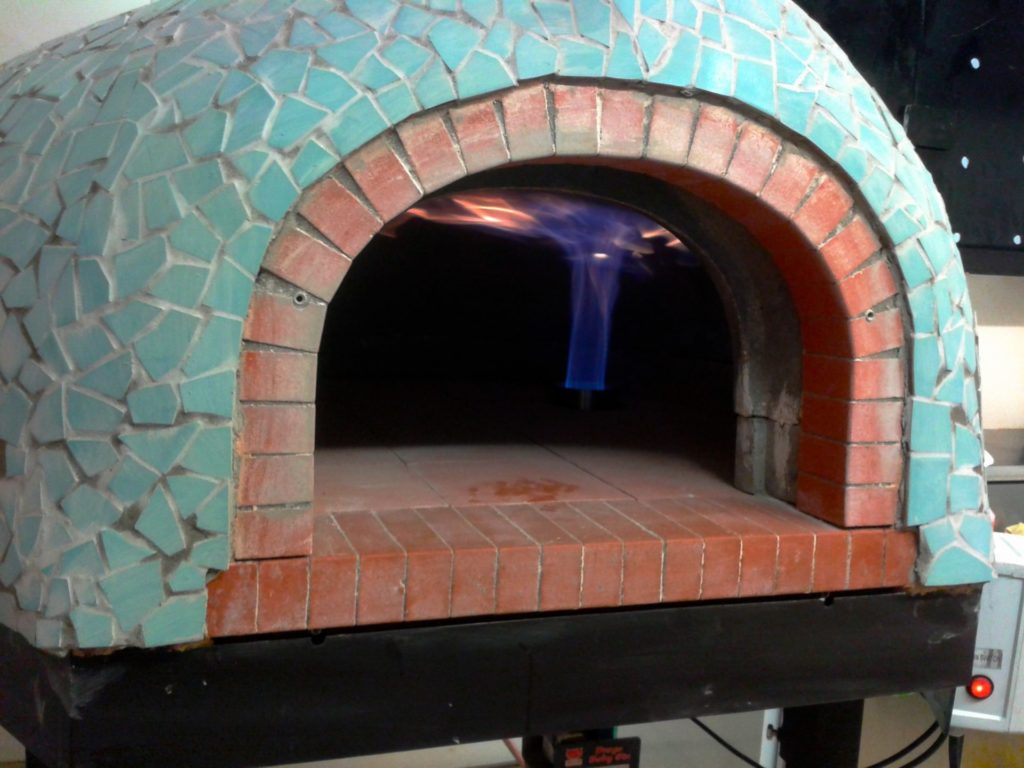
Gas-pizza ovens have the benefit of a live flame that simulates a wood fire but without the smoke as natural gas burns cleanly to carbon dioxide and water giving off heat as it does so.
The flame, if set properly, licks over the dome interior like a wood fire but has the advantage of being set by a digital thermometer so whenever the temperature drops, the gas burner fires up to replace the lost heat and will stay on until a preset programmed temperature has been reached. The gas burner itself takes up very little space so again more pizzas can be fitted into the same given area.
The downside is environmental in a different way- gas is a fossil fuel, a finite resource ( as far as we know) and releases carbon dioxide that is a driver for man-made climate change. It is also subject to the vagaries of supply prices that go up and down depending on demand.
Having said that, because the actual volume of gas being burnt is known, it is possible to offset the emissions by tree or biomass planting or supporting organisations that offer to plant trees for you so that the same amount of carbon gets locked up again making it more carbon neutral.
Conclusion- gas-pizza-ovens or bust?
The rise of wood fired cookery has followed the curve of chefs wanting authenticity, high quality ingredients and high heat combined with smoke and flame to give food unparalleled flavour. Tragically it is happening at a time of fast moving climate change coupled with a need to clean up our environment both of pollution and waste.
Many businesses set themselves up thinking they were doing the right thing and invested heavily in getting the right appliances to do the job while all the time the goal posts have been moving in a direction that may leave many without a business unless they change to fit new environmental laws.
There is an argument to be had about how much difference banning wood burning appliances will make to urban pollution ( see HETAS article here) but the reality is it is likely to be caught up as a by product of the drive to reduce the very real dangers of particulate emissions to our health.
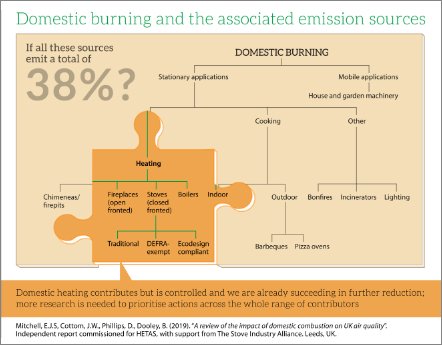
It may be that gas-pizza-ovens are the only way to go in Clean Air Act areas where political will drives change for a better environment, much will be lost but maybe chefs will rise to the challenge and come up with clever ways of getting that charred smoky flavour without the perceived damage emissions are causing to our health.
Gas pizza ovens- a solution
Four Grand-Mere have a long tradition of making wood-fired ovens for both home and business but they have understood that gas-pizza-ovens play a role going forward into the future. With a large range of sizes available, no business who is thinking ahead can afford to ignore what is on offer and should plan accordingly. Please contact us for advice and pricing.
Image courtesy Creative Commons-https://creativecommons.org/licenses/by-sa/2.0/
